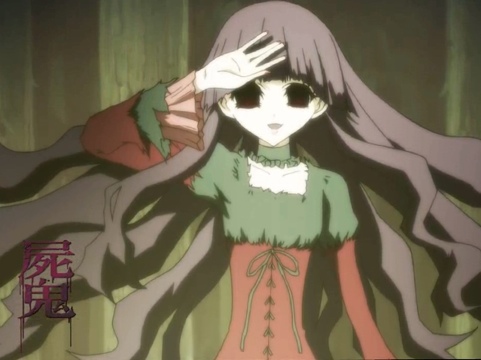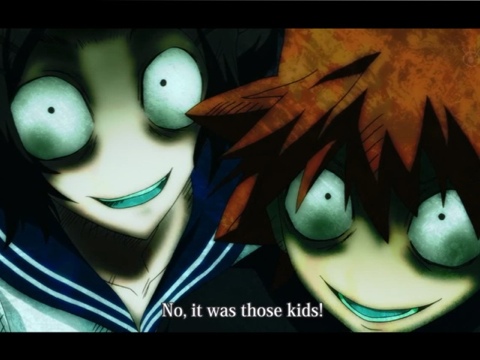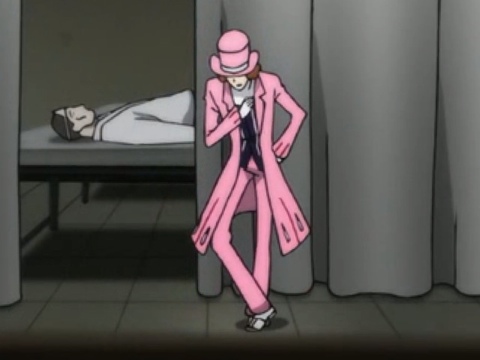[I have finals now, so a little bit of a short post.
I haven’t watched ANYTHING in the past week because for the first time in while ‘sleep’ exceeded ‘anime’ on my priority list. What is happening to me?
Anyhow, content:]
I was GOING to write about [C], but then a friend made me listen to “Pendulum” from the Shiki OST. It was creepy enough for me to give it a try, and considering that I haven’t seriously watched anything for several weeks with the end of school, I decided to marathon it.
BEST.
IDEA.
EVER.
So I can get a little fanboyish, what of it? Shiki was good. Quite good. To be honest, I didn’t know anything going into it other than that it was some sort of horror anime. Within the first few episodes it feels like a sort of Higurashi clone, but then I saw the “insect bites”.

Insect bites? Really?
Oh fun, no? A vampire story. And it’s going to take them all of three-quarters of the show to figure the damn thing out, and THEN they’ll kill them with stakes and silver bullets. Since they’re vampires. And it works.
Surprisingly, it’s not that clichéd. Which made me happy. Shiki DO die from stakes to the heart, but that’s not assumed from them being vampires; rather, our beloved sick Toshio-sensei dissects his resurrected wife. Cute scene.

Cleaning up the blood, I hope, you sick bastard.
As the main character is a doctor, the show goes above and beyond any other show I’ve seen with medical knowledge. You’d think that the guy who made this was a doctor or something (she’s not), since characters are diagnosed with everything from anemia (two different types) to lupus, and [SPOILER] it’s never lupus.
Anyhow, the plot is MUCH better than I would have assumed. (Spoilers follow.) Two episodes from the end I found myself asking “what happened to Natsuno cooperating with Toshio? He hasn’t shown up at ALL.” Shiki pulls a slick one and uses the answer to that question to answer another question: “How did Toshio kill Chizuru?”, while killing off Natsuno in a rather badass but sad way. Meanwhile, the story doesn’t end with the good guys winning (as I had expected) nor with the bad guys winning (only one of them survives) but with everything being utterly destroyed. Cool way to finish the series, I suppose. Although I didn’t want Megumi to die. Those tracts.
Animation-wise, two words: DAT HAIR.






And the best:

There IS more to this than the hair; it’s just the most noticable part.
As I mentioned previously, the music was the part that introduced me to the series. It’s no classic like Hirisawa’s Mousou Dairinin soundtrack (no trolls please) but it is coherent and makes the series feel properly creepy. And “Kuchidzuke” gets stuck in your head after a while. Sadly, the best tracks are used sparingly: “Pendulum” only plays in full in the fourth episode, although the first three notes are used as a “dun dun dunnn” throughout the series.
Finally, this show has its fair share of badass characters, but you can check that out yourself. Basically everyone who dies and has any sort of significance gets an awesome death. Except Chizuru, but if you’re into gore that’ll be fine too. Seishin stars in the most satsifying last half-second of video since the end of Portal 2 (look it up if you haven’t seen it), at least if you’re a fan of the Shiki, like I am (topic for later).
I would dump a large amount of screencaps here if it weren’t for the effort involved. Much easier is this:
8.5–9.0/10.
Watch it.
EDIT: Oops, I lied.































